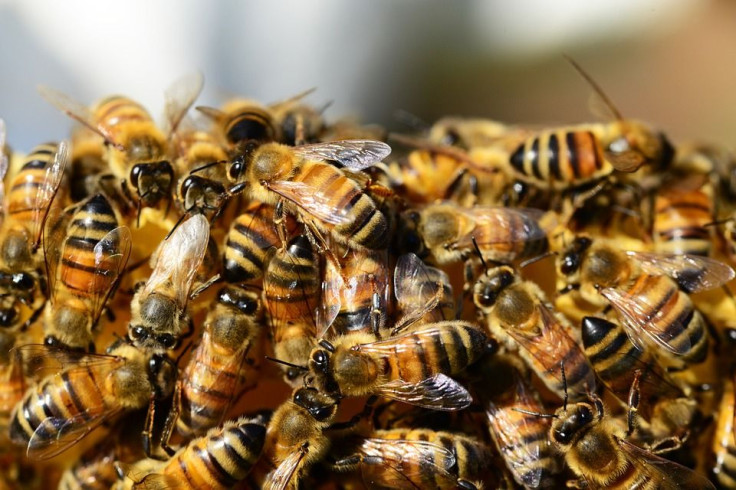Common Pesticides And Bee Health: Two Large Studies Say Neonicotinoids Harm Pollinators

As more and more bees disappear from our planet, scientists have sought to find definitive answers about what’s threatening them. Past research has suggested that common pesticides are killing bees around the globe, but two new studies found more evidence of how they’re harming various types of bees.
In two large-scale studies, published in the journal Science, researchers investigated neonicotinoid pesticides, or “neonics” for short, to better understand how they affect bees in the real-world field environments. Past research has indicated neonics are harmful; however, many experts were skeptical because the research was done in laboratory settings where bees were force-fed.
Read: Honey Bees Are Vital To Our Way Of Life; What Would Happen If They All Die
“These field results confirm that neonicotinoids negatively affect pollinator health under realistic agricultural conditions,” the authors of a Toronto-based study wrote in a summary of their findings.
In a second study published this week, researchers studied honeybees and two types of wild bees at locations across the United Kingdom, Germany, and Hungary. Some of the bees were put near fields with seeds treated with neonicotinoid pesticides and standard fungicides, and others were placed near fields with just fungicides.
The findings revealed that most of the bees who fed on neonic-treated canola fields in Hungary and the U.K. did not reproduce or survive as often as those living around fields treated only with fungicides. However, in Germany this was not the case. In fact, those bees actually had an increase in egg production, though this colony was observed to be stronger at the outset.
“We think this is a really interesting result,” lead study author Richard Pywell told NPR. “We believe that this goes some way toward explaining the inconsistency of previous [research results].”
Read: Bees Added To US Endangered List; 7 Species Native To Hawaii To Receive Protection
Germany’s environment may be what protected the bees from neonics. “We believe that other factors interact with neonicotinoid exposure to cause negative effects on honeybees and wild bees,” Pywell said.
While he’s uncertain of what those factors may be, a few possibilities might be because the hives in Germany were larger, had less disease, and the bees had a greater variety of wild flowers to choose from.
The researchers hope their findings impact the way regulatory testing is conducted on pesticides. “[They] add important new evidence to the neonicotinoid debate that policymakers will need to consider,” biologist Jeremy Kerr, who was not involved in the study, wrote.
The study was partly funded by Bayer, which is a company that produces a majority of the world’s neonicotinoid pesticides. In a statement, Bayer noted the study did not find consistent results and therefore they “remain confident that neonicotinoids are safe when used and applied responsibly.”
See also: Aerial Pesticide Spraying Possibly Linked To Autism, But Some Scientists Wary Of Connection



























